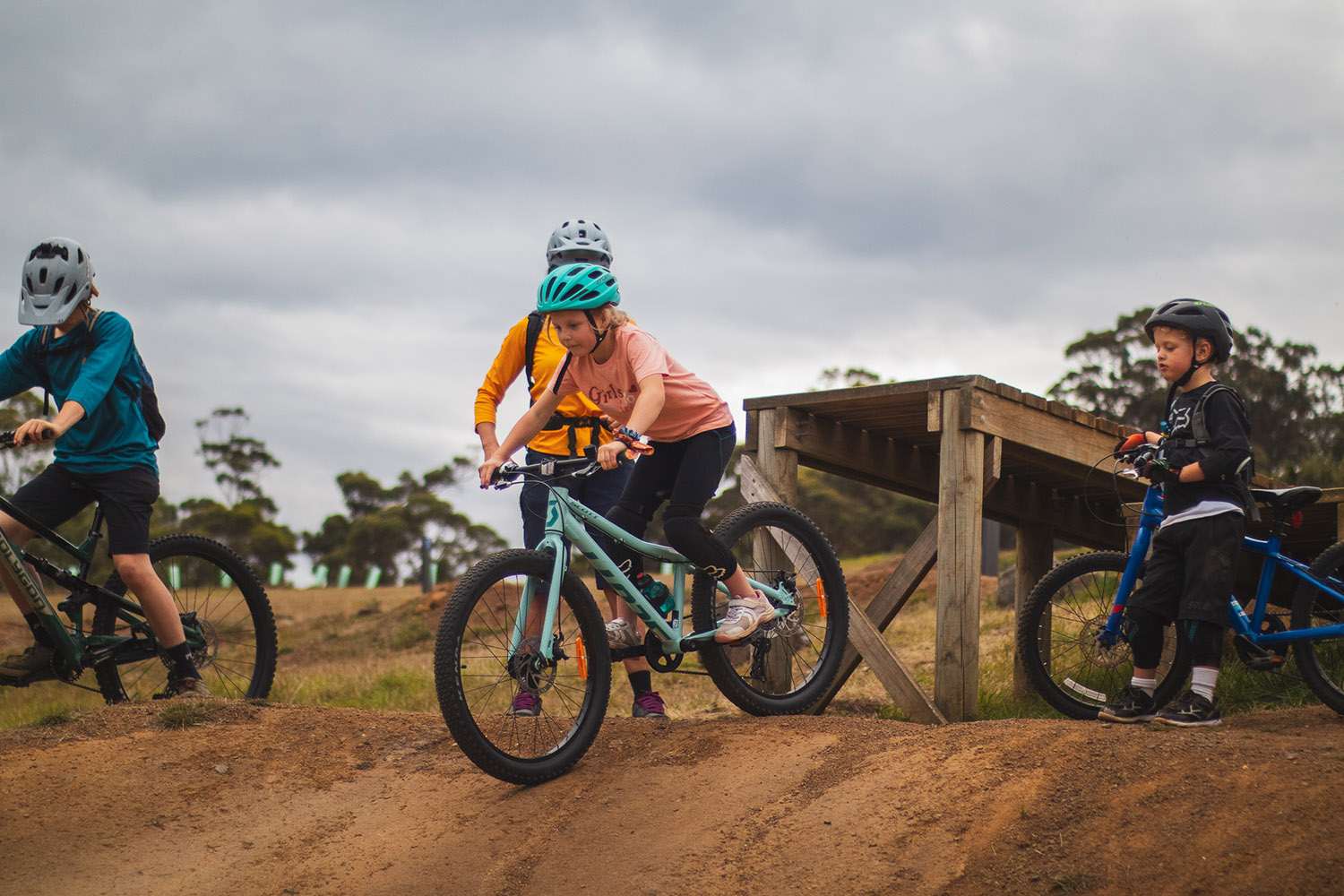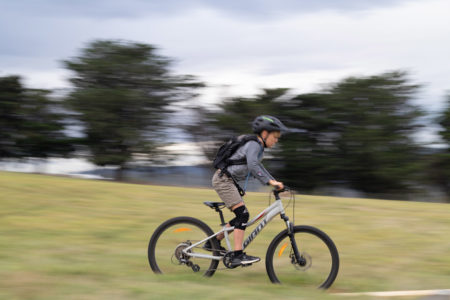Getting your mini-shredders out riding with you is a marvellous way to convince them to put their screens down and enjoy some sunshine and fresh air. The key to keeping your groms begging you to take them to the trailhead every weekend is to make sure they are having fun. Christa Capel from Rideo gives us the rundown on laying the foundations to help your kidlets love mountain biking.
You may recognize Capel as our Tassie Tourguide extraordinaire, leading us through Wild Mersey, St Helens, and Derby. When she’s not showing us the best places to ride, eat and drink around the Apple Isle, she’s teaching kids the skills they need to have a blast on their bikes with Rideo; mountain bike skills instruction services around Tasmania for anyone and everyone with a primary focus on kids, women and families.

So, read on for her top tips!
- Must Ride | Wild Mersey MTB Trails, Tasmania
- Must Ride | St Helens, Tasmania – Ride, Swim, Eat, Repeat Part 1 and Part 2
- Heading to Derby? Bring the family, everyone else is!
Equipment

1. Brakes
Most kids have a bell on their bike, so move that to the side of the back brake lever. We tell them to say ‘bell is back,’ to help them remember.
But the brakes are no good if your child can’t actually reach the levers! Check that they are at a good level for riding; quite often, we find ourselves lifting the levers up almost level, so they are parallel to the ground. This helps for going downhill, so the kids can stand up with their weight centred over the bike and not be leaning forward trying to reach the levers.

2. Grip shifters
They are good in theory, but in reality, we have always seen problems! Kids get muddy, and so do their bikes; the moment grit finds its way into a grip shifter, it can become difficult for little hands to twist. If possible, avoid them, save your child’s wrists and stick to the thumb shifter.

3. Fat tyres
We’re no scientists, but from our experience with teaching kids mountain biking, these extra tyres are getting in the way! They are meant to bring stability, but we see kids constantly fighting for it when riding bikes with wide rubber. If your child is struggling with a fat tyre, try something else to help with their confidence. You might have to backtrack, but it’s worth it.

4. Quick-release seatpost
Most kids bikes don’t have a dropper post (yet!), so install a seat collar with a quick-release level so they can move their seat up and down for climbing and descending. Not only will this get them in the habit early on, but it can also help them to remember the correct body position for the trails.

5. Hydration pack
Shells are for turtles, not kids, so avoid making them shell laden reptiles, with big heavy oversize bags on their back. The added weight makes riding difficult and causes your kids to feel unsteady on their bike! Make sure they are well fitted.

6. Kickstands
How does NO sound!? How fun would it be launching off a jump and landing and then your bike stopping and sending you over the bars? Not fun at all. Remove kickstands and take the opportunity to teach your kids you need to put your bike down with the drivetrain is facing up to prevent damage or poor shifting.
Beginner Skills
7. Standing up
If kids forget to stand up on the descents, you need to give them triggers to remember. I tell the kids I coach to do the “chicken” every time they hit a downhill section — stand up, level pedals and big chicken wings. We start with heavy repetition and sessioning the same feature again and again.

Look for a small roller or ramp so they can get the action dialled in and engrain it into their muscle memory. Taking it out on the trails, I make kids stop before every downhill and repeat it; they have to tell us the three parts of the “chicken” before they go down the hill. And my favourite part is the challenge! If their butt touches the seat, that’s worth a push-up.
8. No skids
How many parents go out riding with their kids, and their little ones pick up too much speed and crash? I’ve seen it happen way too many times, but this doesn’t happen in Rideo groups because of the “no skid rule.”

Through our training with the kids and we cover braking. We give them a scenario that is easy to understand and relate it riding; like a car skidding down the road is out of control and will crash, and if we see the kids skidding, they are out of control and might crash.
We engrain in their brain that going down the steep hills and skidding relates to crashing; we don’t want to crash! So by getting them to focus on avoiding skids, we find they slow right down. And my favourite part; 1 skid = 1 push up, and no one likes doing push-ups.
9. No pedal challenge
Every time we are at the pump track, we challenge the kids to see how far they can get without pedalling. This helps them focus on their pumping technique, and as they try to get further, the kids naturally improve and discover more about pumping.

This also gives them a goal to work towards — getting around the whole track without a pedal or trying to reduce the 3 pedals to no pedals, etc. Again, when teaching kids, it has to be a game, challenge or have some form of goal to keep them engaged!
- Related: Tested: Shotgun Kids MTB Seat
Words — Christa Capel @rideo
Images — Sebastian Greenwood @sebastian__greenwood / Kristina Vackova @kiphotomedia / Jasper da Seymour @jdaseymour















